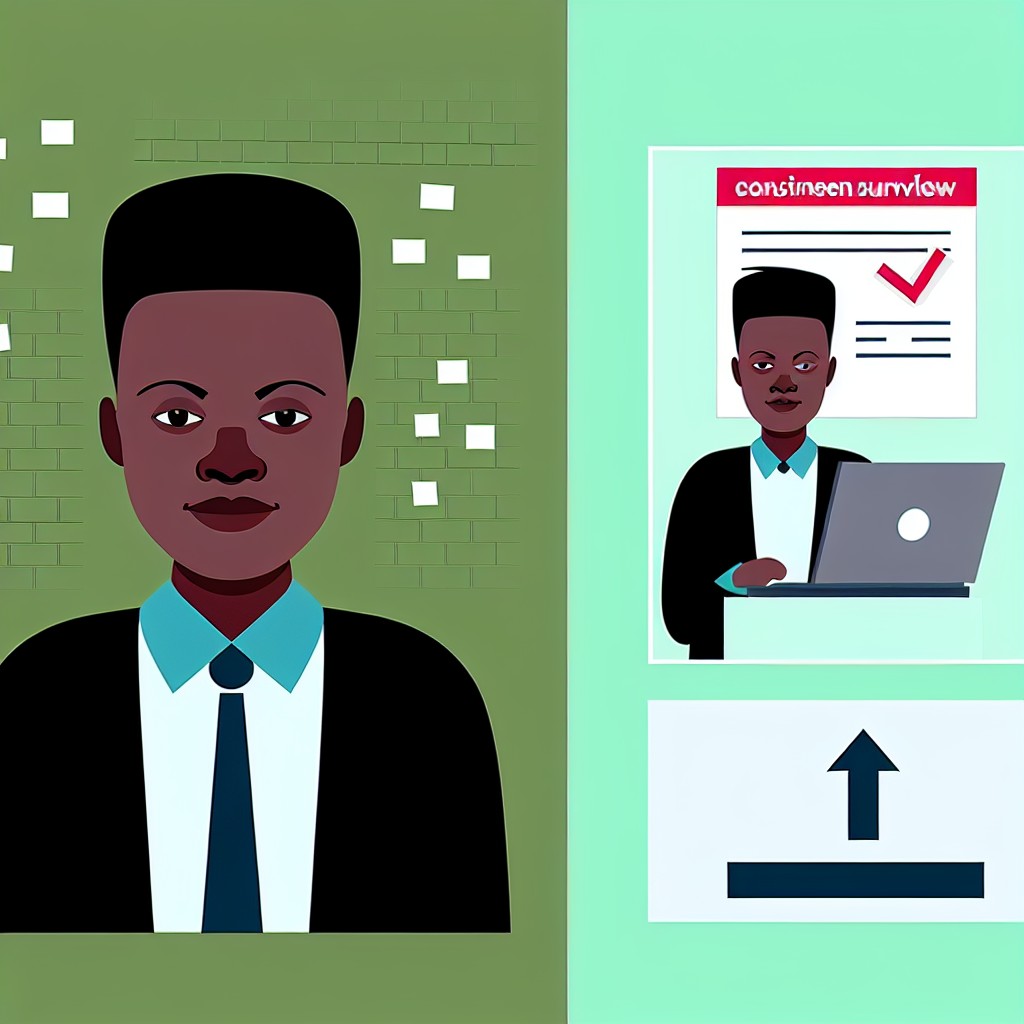Understanding the Importance of a Consistent Workflow in Online Surveys
Ensuring Data Quality and Reliability
A consistent workflow improves the accuracy of survey data collection.
Surveyors avoid errors by following standardized procedures each time.
Moreover, consistent steps reduce variability in survey responses.
Thus, data remains reliable and easier to analyze effectively.
Enhancing Respondent Experience
A smooth workflow provides clear instructions for survey participants.
Participants feel more confident and engaged during the survey.
Consequently, higher completion rates and better data quality result.
Good experience also encourages repeat participation in future surveys.
Streamlining Survey Management
A consistent workflow simplifies project management for survey teams.
Team members quickly understand their roles and tasks at each stage.
Therefore, collaboration improves between coordinators like Emily Chen and analysts such as David Martinez.
This organization reduces delays and resource waste throughout the process.
Facilitating Compliance and Ethical Standards
Adhering to a fixed workflow helps meet legal and ethical guidelines.
For example, privacy protocols remain intact when steps are standardized.
This protects respondents’ data and maintains company reputations.
Personalized Financial Consulting – Tailored for You
Get a custom financial plan made just for you in 1-3 days. Clear strategies, actionable steps, and unlimited revisions.
Get StartedOrganizations like Meridian Data Solutions emphasize workflow consistency for compliance.
Supporting Continuous Improvement
Consistency allows teams to track workflow effectiveness over time.
Survey managers can identify bottlenecks or errors efficiently.
As a result, the process evolves based on measurable insights from previous projects.
Tech startups such as Nova Insights leverage this approach to optimize their surveys.
Setting Clear Goals and Objectives for Your Survey Process
Defining the Purpose of Your Survey
Begin by identifying the primary reason for conducting your survey.
This step guides the entire survey process effectively.
For example, gather customer feedback to improve service quality.
Alternatively, explore market trends to inform product development.
Furthermore, clear purposes help target the right audience.
Consequently, you receive more relevant and actionable data.
Establishing Measurable Objectives
Set specific outcomes you want to achieve with your survey.
These objectives should be clear and quantifiable.
For instance, aim to increase customer satisfaction ratings by 15%.
Unlock Your Path to Financial Freedom
Personalized savings and investment strategies tailored to your financial goals. Let's help you take control of your future with a plan designed just for you.
Get StartedOr, seek to understand purchasing habits among Millennials in Chicago.
Clear objectives allow you to track progress over time.
Moreover, they help align your team’s efforts and expectations.
Aligning Goals with Business Priorities
Ensure your survey goals support your company’s broader mission.
For example, if GreenLeaf Innovations focuses on sustainability, surveys should reflect this focus.
This alignment improves relevance and stakeholder buy-in.
It also prioritizes resources effectively within your organization.
As a result, survey insights contribute directly to strategic decision-making.
Communicating Goals to Your Team
Share your survey goals clearly with everyone involved in the process.
Use team meetings or collaboration tools for transparent communication.
When Laura Nguyen at BrightPath Consulting launched surveys, clear goals helped her team stay focused.
This clarity reduces confusion and improves accountability.
Additionally, it encourages consistent execution from start to finish.
Reviewing and Adjusting Goals Periodically
Regularly revisit your survey objectives to ensure they remain relevant.
Take Control of Your Debt Today
Struggling with debt? Get personalized strategies to pay off your debts, negotiate with creditors, and rebuild your credit. Your path to financial freedom starts here.
Get HelpMarket conditions and business needs may change over time.
For instance, after gathering initial data, you might notice new trends worth exploring.
Adapting your goals accordingly maximizes the survey’s impact.
Thus, maintain flexibility while keeping your objectives clear and purposeful.
Choosing Reliable Survey Platforms and Tools
Evaluating Platform Reliability
Select platforms known for consistent uptime and minimal technical issues.
For instance, ClearPoint Surveys delivers robust performance under heavy survey loads.
Reliable platforms ensure your data collection is uninterrupted and trustworthy.
Additionally, check for regular updates that improve features and security.
Consider user reviews to gauge platform stability and customer satisfaction.
Key Features to Look For
Choose tools with intuitive interface designs to streamline survey creation.
Moreover, platforms should support multiple question types for diverse data.
Integration capabilities with analytics software enhance workflow efficiency.
Look for built-in features like logic branching to tailor surveys dynamically.
Lastly, prioritize platforms that offer export options compatible with various formats.
Security and Compliance Considerations
Always select platforms that comply with data protection regulations like GDPR.
Secure data storage is essential to protect respondent information.
Encryption during data transmission further enhances survey security.
Trusted vendors like Summit Data Services undergo regular security audits.
Confirm that the platform provides clear privacy policies and user control.
Cost and Support Evaluation
Compare pricing models to find platforms fitting your budget constraints.
Some vendors offer scalable plans, which adjust as your survey needs grow.
Reliable customer support ensures issues are resolved quickly.
Check for available resources like tutorials and community forums.
Effective support influences your ongoing survey workflow success.
Discover More: Quick Cash Online: How Nigerians Can Use Surveys and Microtasks to Save for Big Goals
Creating a Survey Schedule and Sticking to It
Establishing a Realistic Timeline
Start by assessing the scope of your online surveys.
Consider the length and complexity of each survey.
Then, determine how often you need to release new surveys.
Set achievable deadlines to maintain consistency over time.
Remember, overly ambitious schedules often lead to burnout.
Therefore, balance frequency with available resources.
Using Tools to Organize Your Workflow
Leverage calendar apps like Google Calendar or Outlook.
Create recurring events to remind you of survey deadlines.
Additionally, project management tools can track progress efficiently.
Tools like Trello or Asana help visualize tasks and milestones.
These platforms ensure no step gets overlooked.
Building Accountability with Team Members
Assign specific roles to colleagues or collaborators.
Share the survey schedule with your team clearly.
Regular check-ins help monitor progress and resolve issues.
Open communication encourages timely completion of tasks.
Furthermore, celebrating small wins boosts morale and motivation.
Adapting the Schedule When Necessary
Expect unexpected delays and plan for flexibility.
If obstacles arise, adjust your timeline promptly.
Communicate changes to all stakeholders immediately.
Use setbacks as opportunities to improve future workflows.
Consistent evaluation keeps your survey process effective.
Maintaining Consistency Over the Long Term
Develop habits around your survey routines.
Block dedicated time slots on your calendar for survey work.
Use reminders to stay on track without feeling overwhelmed.
Regularly reviewing your schedule reinforces commitment.
Finally, stay focused on your survey goals to ensure success.
Explore Further: The Role of Task Aggregator Platforms for Nigerians
Designing Effective and Engaging Survey Questionnaires
Understanding Your Survey Goals
Begin by clearly defining the objectives of your survey.
These goals help shape the questions you will ask participants.
Moreover, clear goals ensure you collect relevant and actionable data.
Discuss your survey aims with your team to align expectations.
Crafting Clear and Concise Questions
Use simple language to avoid confusion among respondents.
Ensure each question focuses on a single idea to improve clarity.
Also, avoid jargon or technical terms that might confuse participants.
Keep questions brief to maintain respondents’ attention throughout the survey.
Choosing the Right Question Types
Select question types that best capture the information you need.
Use multiple-choice questions for easy analysis and faster responses.
Include open-ended questions when you want detailed opinions or explanations.
Additionally, rating scales help quantify attitudes or satisfaction levels effectively.
Maintaining Logical Flow and Structure
Organize questions in a natural and intuitive order to enhance engagement.
Group related questions together using clear section headings.
Use transition statements to guide respondents smoothly between topics.
Arrange questions from general to specific to build respondent comfort gradually.
Improving Respondent Engagement
Incorporate visual elements like progress bars to motivate completion.
Limit the survey length to prevent participant fatigue and dropouts.
Use personalized greetings or messages to create a connection with respondents.
Test the survey on different devices to ensure accessibility and ease of use.
Pretesting and Refining Your Questionnaire
Conduct pilot testing with a small group to identify ambiguous questions.
Collect feedback on question clarity and overall survey experience.
Revise questions based on responses to improve reliability and validity.
Repeat testing until the questionnaire consistently produces quality data.
Explore Further: How to Avoid Scams in Online Paid Tasks in Nigeria
Automating Repetitive Tasks to Save Time and Reduce Errors
Identifying Tasks Suitable for Automation
Begin automation by identifying repetitive tasks in your survey workflow.
These tasks usually include data entry, survey invitations, and reminders.
Streamlining these processes saves valuable time for your team.
Automation also reduces the risk of human error during these routine steps.
Therefore, focus first on tasks that consume large amounts of manual effort.
Choosing the Right Automation Tools
Select software tools that integrate well with your existing survey platform.
For example, tools like SurveyCraft and DataInsight offer automation features.
Platforms with API support allow custom automation workflows.
Consider usability and support when evaluating automation solutions.
Ensure the tools provide reliable error-handling mechanisms.
Creating Automated Workflows
Begin by mapping out the entire workflow of your online surveys.
Next, define trigger points for automation, such as sending follow-up emails.
Use automation features to schedule invitations and collect responses.
Automate data validation to catch inconsistencies early in the process.
This approach allowed Naomi Mitchell’s team to significantly reduce manual tasks.
Benefits of Automation in Survey Management
Automation increases overall efficiency by handling repetitive tasks.
It ensures consistency across all survey-related activities.
As a result, your team can focus more on data analysis and strategic planning.
Automation also improves respondent experience with timely communications.
This method ultimately improves the accuracy of survey results.
Best Practices for Maintaining Automated Systems
Regularly monitor automated workflows to identify errors or bottlenecks.
Update automation scripts and settings as survey requirements change.
Train team members to manage and troubleshoot automation tools effectively.
Keep documentation of automation processes for easy reference.
Following these practices helped Lucas Fernandez’s firm optimize survey operations.
You Might Also Like: How Paid Surveys Fit Into Nigeria’s Work-From-Home Culture

Tracking Survey Responses and Analyzing Data Regularly
Establishing a Reliable Response Tracking System
Consistently tracking survey responses predicts the success of your data collection.
Use specialized survey platforms like SurveyStart or ResponseTrack to automate tracking.
These tools provide real-time response monitoring and detailed participant information.
Moreover, setting up email notifications alerts Elena Martinez, your data manager, when new responses arrive.
Additionally, syncing surveys with Google Sheets helps maintain an organized response database.
This system reduces manual errors and saves time for the analytics team at Insight Analytics.
Routine Data Analysis for Actionable Insights
Regular data analysis guides decision-making and refines survey strategies effectively.
Schedule weekly data reviews to examine response trends and identify anomalies.
During analysis sessions, data analyst Carlos Fernandez uses dashboard visualizations to interpret results.
Moreover, he applies filters to segment data by demographic groups and response timing.
Consequently, the team uncovers meaningful patterns that enhance customer feedback measurement.
Combining quantitative statistics with qualitative comments captures a holistic understanding of responses.
Using Automated Reports and Alerts
Automated reports streamline data interpretation for stakeholders like marketing lead Priya Singh.
Set up automatic weekly email summaries highlighting key findings and response rates.
Furthermore, alert systems notify the team when response rates drop below critical thresholds.
This prompt communication allows proactive adjustments to survey outreach or reminders.
In parallel, integrating tools like Tableau or Power BI enriches report visualization and accessibility.
Maintaining Data Quality Throughout the Workflow
Consistent data validation prevents inaccuracies during the response collection process.
Introduce quality checks such as detecting duplicate entries or invalid responses automatically.
Survey coordinator Daniel Kim regularly audits incoming data to ensure reliability.
Moreover, clear guidelines for respondents reduce ambiguous or incomplete answers.
Ultimately, preserving data integrity strengthens overall insight credibility for client reports.
Adjusting Strategies Based on Feedback and Performance Metrics
Collecting and Analyzing Feedback
Effective workflow improvements begin with gathering detailed survey feedback.
Survey managers at InsightWave Solutions recommend regular participant feedback collection.
Additionally, capturing open-ended responses reveals user experience insights.
Use feedback to identify unclear questions and technical issues.
Furthermore, analyze trends in satisfaction scores to spot areas needing change.
Evaluating Performance Metrics
Track completion rates to understand how many respondents finish surveys.
Low completion rates often signal problems in survey length or engagement.
Time-to-complete metrics help identify if surveys are too long or complex.
Moreover, response quality metrics detect random or inconsistent answers.
Combine quantitative metrics with qualitative feedback for comprehensive analysis.
Implementing Targeted Strategy Adjustments
Adjust question phrasing to increase clarity and reduce confusion.
Enhance survey flow by rearranging questions based on logical grouping.
Reduce survey length when performance metrics show respondent drop-off.
Furthermore, incorporate multimedia elements to improve engagement selectively.
Test adjustments with small respondent groups before deploying widely.
Monitoring Changes and Ensuring Continuous Improvement
Track performance metrics continuously after implementing changes.
Survey coordinators at ClearData Analytics emphasize iterative testing cycles.
Regular reviews help refine approaches and adapt to evolving respondent needs.
Share results with your team to align everyone on progress and challenges.
Ultimately, a consistent workflow relies on adapting based on solid data and feedback.
Maintaining Data Security and Respondent Privacy Throughout the Workflow
Implementing Robust Data Protection Measures
Companies like Meridian Insights prioritize data security in every online survey project.
They use end-to-end encryption to protect data during transmission.
Surveys store sensitive information on secure servers with restricted access.
Survey administrators employ multi-factor authentication to prevent unauthorized logins.
Regular security audits identify and address vulnerabilities promptly.
Ensuring Respondent Anonymity and Confidentiality
Survey designers at Horizon Analytics avoid collecting personally identifiable information unless necessary.
They use anonymized identifiers to track responses securely instead.
Clear privacy statements inform participants about data usage and protection.
This transparency builds trust and encourages honest participation from respondents.
Survey platforms provide options for respondents to skip questions or withdraw anytime.
Complying with Legal and Ethical Standards
Brightview Research closely follows GDPR, CCPA, and other data protection regulations.
They conduct compliance training for all team members involved in survey workflows.
They maintain detailed records of consent and data processing activities.
This approach helps mitigate legal risks while respecting respondent rights.
Regular Monitoring and Incident Response
AlphaData Solutions implements continuous monitoring to detect suspicious activities.
They use automated alerts to respond quickly to potential security breaches.
Predefined protocols guide the team’s response and communication efforts in case of incidents.
This readiness minimizes harm and maintains confidence in the survey process.
Best Practices for Collaboration and Data Handling
Data teams at Clearwater Surveys limit access based on individual roles and responsibilities.
They use secure collaboration tools to share information without exposing raw data.
All data transfers occur over encrypted channels to prevent interception.
Teams regularly update policies to adapt to new security challenges and technologies.
Tips for Staying Motivated and Avoiding Burnout When Conducting Surveys
Maintaining Clear Goals and Purpose
Start by defining clear and meaningful goals for your survey projects.
Knowing the purpose helps you stay focused during long tasks.
Communicate the value of your surveys to your team or stakeholders.
This motivation keeps your energy levels high throughout the process.
Creating a Balanced Schedule
Plan your work in manageable time blocks to avoid exhaustion.
Include regular breaks to refresh your mind and body.
Balance survey tasks with other responsibilities to maintain variety.
This approach reduces the risk of mental fatigue and burnout.
Using Tools to Simplify Workflows
Leverage survey platforms like SurveyBuilder Pro or InsightWave.
Automate repetitive tasks such as data collection and reminders.
Use project management tools like Trellis or BrightPath to organize tasks.
These tools help you work efficiently and reduce stress.
Fostering Collaboration and Support
Engage with colleagues or survey experts for advice and encouragement.
Share your progress and challenges with a supportive community.
Collaborative efforts make the process more enjoyable and sustainable.
Receiving feedback inspires continuous improvement and motivation.
Incorporating Healthy Habits
Prioritize adequate sleep and regular physical activity each day.
Practice mindfulness or meditation to manage stress effectively.
Stay hydrated and maintain a balanced diet to support brain function.
Healthy habits sustain long-term focus and resilience during survey work.
Celebrating Milestones and Achievements
Recognize completed phases or successful survey launches.
Reward yourself with small incentives like a favorite treat or break.
Positive reinforcement encourages continued commitment.
Celebrate team accomplishments to boost morale and unity.




